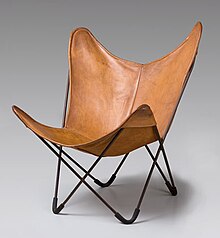
Bernardino de la Trinidad González Rivadavia was the first President of Argentina, then called the United Provinces of the Río de la Plata, from February 8, 1826 to June 27, 1827.

Florida Street is a popular shopping street in Downtown Buenos Aires, Argentina. A pedestrian street since 1971, some stretches have been pedestrianized since 1913.
Campaign furniture is a type of furniture which is made for travel. Historically, much of it was made for military campaigns.
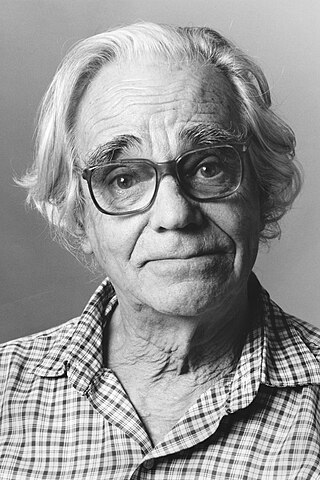
León Ferrari was an Argentine contemporary conceptual artist. During his extended art career (1954-2013), his artworks often protested the Argentinian government, the imperialist west, and the Church.
Events in the year 2004 in Argentina.
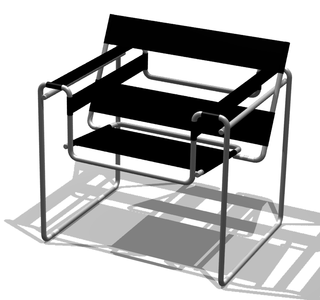
Knoll, is an American company that manufactures office systems, seating, storage systems, tables, desks, textiles, as well as accessories for the home, office, and higher education. The company is the licensed manufacturer of furniture designed by notable architects and designers such as David Adjaye, Harry Bertoia, Ludwig Mies van der Rohe, Florence Knoll, Frank Gehry, Charles Gwathmey, Maya Lin, Marc Newson, Ini Archibong, Eero Saarinen, and Lella and Massimo Vignelli, under the company's KnollStudio division. Over 40 Knoll designs can be found in the permanent design collection of the Museum of Modern Art in New York City.

Ernesto Carlos Tornquist was an Argentine entrepreneur and businessman, considered to be one of the most important entrepreneurs in Argentina at the end of the 19th century. The diversified business empire he created played a key role in helping to link Argentina with the trading and financial systems of the first world. Amongst many other achievements, he founded the Tornquist Bank, the Plaza Hotel in Buenos Aires, the partido of Tornquist and Tornquist its main city, in the south of Buenos Aires Province.
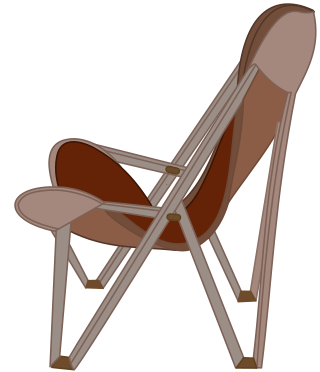
The Tripolina is a folding chair made out of wood with metal swivel joints and animal hide. It was invented by Joseph B. Fenby and patented in the United States in 1881.

The 1958 1000 km Buenos Aires took place on 26 January, on the Autódromo Municipal-Avenida Paz,. It was the fifth running of the race, and once again, it was opening round of the F.I.A. World Sports Car Championship. For this event, it returned to the Autódromo, after having a one-off race at the Circuito de la Costanera Norte, however its layout was not generally well received.

The 1957 1000 km Buenos Aires took place on 20 January, on the Circuito de la Costanera Norte,. It was the fourth running of the race, and once again, it was opening round of the F.I.A. World Sports Car Championship. For this event, was moved from its previous venue, the Autódromo Municipal-Avenida Paz, only to return to the Autódromo in 1958.

The National Aeronautics Museum "Brigadier Edmundo Civati Bernasconi" is an Argentine museum located in the city of Morón, Buenos Aires. Established in 1960, the museum is dedicated to the history of aviation, in particular the Argentine Air Force.
Antoni Bonet i Castellana was a Spanish architect from Catalonia, designer and urban planner.
Events from the year 2013 in Argentina

Juan Kurchan was an Argentine architect and designer and a mentor of the Modern Movement in Argentina. He designed a portable seat known as the BKF Chair or butterfly chair. He was part of a group working with Le Corbusier on a plan for redevelopment of the city of Buenos Aires, and later entered the city administration and designed many new buildings there. He later became a director of the National Endowment for the Arts.

Itala Fulvia Villa (1913–1991) was an Argentinian architect whose main forte was city planning. She was an integral part of creating and designing the urban model for the city of Buenos Aires. As part of urbanization process, she designed and built a plan for the neighborhood known as Bajo Flores, where Pope Francis grew up, for which she received first prize in the 6th National Exhibition of Architecture Fair in 1945. In 1979, she was a representative of the Argentina Federation of University Women.
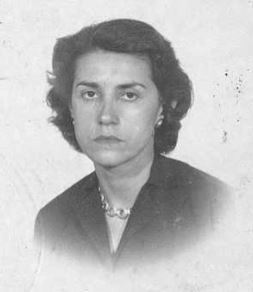
Odilia Suárez was an Argentine architect, educator and urban planner. After graduating with the Gold Medal for 1950 from the University of Buenos Aires, she studied at Taliesin West with Frank Lloyd Wright and studied municipal planning in Canada, Great Britain and the United States. After returning to Argentina in 1964, she opened her own design studio at the University of Buenos Aires, working her way through the academic ranks to head the post-graduate research program in the architectural department, to finally Professor Emerita of the School of Architecture and Urbanism. At a time when few women were able to work in the field, Suárez was a pioneer and was committed to region-wide professionalism and scholarship. As an urban planner, she served as president of the City Council of Urban Planning for Buenos Aires and consulted on projects in Managua, Nicaragua and Puerto Madero. Her expertise led to a consultancy with the United Nations for planning and urban design throughout Latin America. Throughout her career, she won nineteen national architecture prizes and was one of the pillars of urban planning for Buenos Aires.

Sonia Berjman is an urban and landscape historian, researcher on the history of Buenos Aires public space and protector of parks, squares, and public green spaces of that city, she is a acknowledged referent for these issues.

Andrea Graciela Giunta is an Argentine art historian, professor, researcher, and curator.

Ciudad Universitaria is an urban campus of the University of Buenos Aires, the largest and most prestigious university in Argentina. Originally designed as a potential centralized campus for all of the university's facilities, nowadays it only houses two of its thirteen faculties: the Faculty of Architecture, Design and Urbanism and the Faculty of Exact and Natural Sciences, as well as a number of dependent institutes and a sports center.
